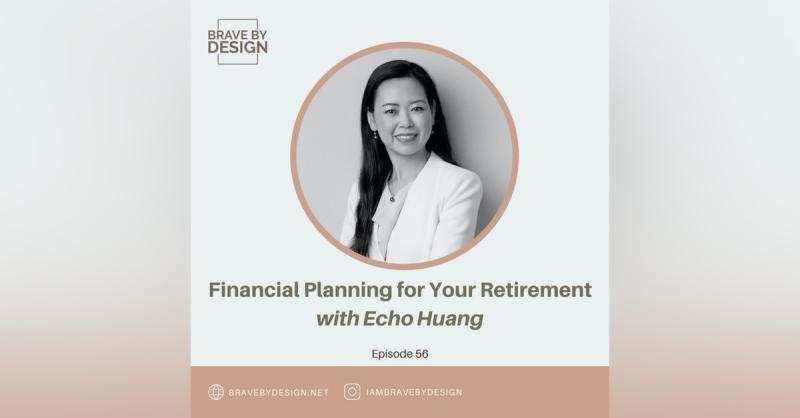Are All Your Eggs in the Proverbial “One Basket?”
In our next few chats, I want to explore what’s in your financial basket. Are all your eggs in one basket? Do you even know what’s in your basket? There are strategies you can implement to maximize your tax savings. Everyone likes to save money, right? And certainly we all want to decrease our taxes. Come along with me as I introduce you to my eight tax strategies.
Just as diversification is important in investing , income source diversification is also important when it comes to planning for your financial future. While today’s top income rate of 37 percent is relatively low compared to historical income tax rates, which were as high as 94 percent during World War II, it’s still vitally important that you diversify your income sources in order to have more flexibility in dealing with potential future tax increases.
The US progressive tax system ensures that all taxpayers pay the same rates on the same levels of taxable income. The overall effect is that people with higher incomes pay higher taxes. For tax planning, you need to understand the difference between your marginal tax rate and your effective, or average, tax rate.
Your marginal tax rate, or tax bracket, is not the tax rate you pay on all of your income after adjustments and deductions. Rather, it’s the rate applied to your additional income over a certain threshold amount. Your effective tax rate is the total taxes you pay divided by your taxable income.
Effective tax rate only matters as a group of taxpayers is compared to another group of taxpayers to illustrate how much taxes each group pays based on their income levels.
For individual tax planning, your focus should be on your marginal tax rate because you can take some action to reduce taxes by not getting into the next higher tax bracket.
How Tax Brackets Work
What if your taxable income is $78,950?
Married filing jointly in 2019 puts you in the 12% tax bracket, but this doesn’t mean you pay 12% on all your income. Here is the math:
First tax bracket: $19,400 x 10% = $1,940
Second tax bracket: ($78,950 - $19,400) x 12% = $7,146
Total Federal Income Tax: $9,086
This tax table shows a 12% marginal tax rate, but an effective tax rate of 11.51%.
What if your taxable income is $321,450? If married filing jointly in 2019, you will be in the 24% tax bracket. Here is the math:
First tax bracket: $19,400 x 10% = $1,940
Second tax bracket: ($78,950 - $19,400) x 12% = $7,146
Third tax bracket: ($168,400 - $78,950) x 22% = $19,679
Fourth tax bracket: ($321,450 - $168,400) x 24% = $36,732
Total Federal Income Tax: $65,497
This tax table shows a marginal tax rate of 24%, but an effective tax rate of 20.38%.
Some people think if they earn more money, all of their income becomes subject to the next-highest tax bracket. They think they will pay more taxes and possibly have less money left over than they would have had they earned less.
As you can see from these examples, that is not true. Each dollar you earn only affects the tax rate and taxes owed on additional income and not to the dollars earned in lower tax brackets.
Eight Tax Strategies
Now that you know how the progressive tax system works, I want to introduce you to eight strategies you can adopt to maximize tax savings. Today we will talk about the first strategy.
Strategy 1: Diversify Your Income Sources
Since you cannot predict your future income tax rates, owning investments in all three tax buckets gives you the flexibility you need to reduce taxes.
Many people miss out on opportunities to save taxes by failing to realize that they are making tax-inefficient decisions and by failing to own investments in all three tax buckets: tax deferred (401(k) and IRA), tax-free (Roth IRA and HSA), and taxable (individual, joint, revocable living trust).
These three buckets provide different opportunities: by maximizing your after-tax-rate return, you pay only the taxes that you are required to pay, you can reduce your tax bill, and you can position yourself better for the long term.
A taxable traditional IRA withdrawal is taxed at the highest ordinary income tax rate. People often forget how much the financial climate can change. For example, a higher income earner could find himself/herself with a tax hike down the road if the government finds itself in need of money.
People often overlook the importance of having a Roth IRA account. Because Roth IRA contributions do not reduce their current tax bill, they may not see the benefits of putting a small amount in a Roth IRA and leaving it to grow for twenty or thirty years.
At retirement, if you find yourself in a 55 percent tax bracket because the political climate has changed, and with it the tax laws, having a tax-free account will offer you a lot of flexibility. You can treat the taxes you choose to pay now on the Roth conversion as “tax insurance” because it helps to manage the risk relating to potential future tax rate increase.
There are other advantages to having a Roth IRA:
You are able to make contributions at any age even after age seventy as long as you and/or your spouse have earned income.
- You are not required to take a required minimum distribution (RMD) from a Roth IRA when you turn age 70.5.
- A nonworking spouse can open a Roth IRA based on the working spouse’s earnings if they file tax returns jointly.
- You can still make your annual contributions if you convert money from a traditional IRA to a Roth IRA in the same year.
- You can contribute to a Roth IRA even if you participate in a retirement plan through your employer.
The Roth IRA allows you to pay taxes now at a certain rate instead of paying taxes later at an uncertain rate. This is a great way to hedge against future income tax increases. Roth IRA contributions are made on an after-tax basis. However, keep in mind that your eligibility to contribute to a Roth IRA is based on your income level. If you file taxes as a single person, your Modified Adjusted Gross Income (MAGI) must be under $139,000 for the tax year 2020 to contribute to a Roth IRA, and if you're married and file jointly, your MAGI must be under $206,000 for the tax year 2020. The maximum total annual contribution for all your IRAs combined is:
- $6,000 if you're under age 50
- $7,000 if you're age 50 or older
Even if your income exceeds the limits for making contributions to a Roth IRA, you can still do a Roth conversion, sometimes called a "backdoor Roth IRA." You can make non-deductible contributions to your IRA and report the contributions to the IRS using Form 8606 when you file income tax returns for the year.
When you convert a traditional IRA to a Roth, you will owe taxes on any money in the traditional IRA that would have been taxed when you withdrew it. That includes the tax-deductible contributions you made to the account, as well as the tax-deferred earnings that have built up in the account over the years. That money will be taxed as income for the year you make the conversion. If you have made non-deductible contributions to your IRA due to high income, then this portion is not taxable and you will follow the pro-rata rule to calculate the taxable portion using form 8606 when you file your tax returns for the year you do the Roth conversion.
One reason that a conversion might make sense for you is if you expect to be in a higher tax bracket after you retire than you are now. That might happen, for example, if your income is unusually low during a particular year (for example, you were furloughed or lost your job during the COVID-19 pandemic) or if the government raises tax rates substantially in the future.
Helping you learn how to save money is an important goal of mine. Understanding the tax codes and advantages and disadvantages of specific types of income, and specifically IRAs, is the first step in maximizing your tax savings. Next time, we will discuss how to help your children fund their IRAs, being creative with charitable giving, and opening a Health Savings Account (HSA).
Until then, think about your financial basket and what eggs you have in it. I’m curious how many of you have a traditional IRA and how many have a Roth IRA? Please share below.













